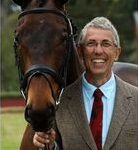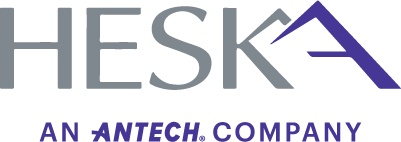Equine Musculoskeletal Ultrasound
When I first graduated in the late seventies there was no such thing as a diagnostic ultrasound machine. Therapeutic ultrasound machines existed but it wasn’t until the eighties that I was exposed to diagnostic ultrasound technology. Initial use was for the purpose of assessing the reproductive status of mares. Up to that point we had to depend solely on our fingers during a rectal exam to assess follicular size and to diagnose pregnancy at an early stage. Now ultrasound allows us precision evaluation of ovarian activity in all aspects of pregnancy. The use of ultrasound to assess tendon pathology soon followed and in the early 1990s the so-called portable machines were available for assessment of musculoskeletal problems. Dr. Norman Rantanen at Washington State University was a pioneer in equine ultrasound and taught many of us the basic principles and use of the technology.
Initially equine musculoskeletal imaging focused on the distal limb. Pathology there was frequently associated with swelling and it was an easy area to examine. I remember being called by a thoroughbred trainer to ultrasound his horse’s “bowed” tendon, a horseman’s term for a tear in the superficial flexor tendon. He was bringing the horse from Seattle to the racetrack in Vancouver and did not want to stop. The weather was cold, freezing actually. I tried to convince him that skin vasoconstriction makes ultrasounds in the cold more difficult and he should come into my nice warm clinic. He insisted the exam be done at the racetrack in Vancouver and said that he would put a heater in his tack room stall. Tack room stalls are only 10 ft by 10 ft areas but he had insulated the walls with horse blankets and with the heater it was quite cozy. I set up my ultrasound on a trolley in the far corner and before I could reach for any sedation the trainer proceeded to back the horse into the room – a bit too rapidly I’m afraid. The horse backed into the rear wall where a bridle that was hanging. This fell off its hanger directly onto the horses rump. The frightened horse leapt forward and simultaneously kicked out at the predator bridle. This resulted in one hoof going directly through the screen of the ultrasound machine. He bolted from the tack room on 3 legs with the ultrasound machine (In those days a 50 pound unit) still firmly attached to his foot. After a few more aggressive kicks he sent the ultrasound machine with all its attached probes and attached thermal printer sailing through the air to land shattered in a heap on the cement surface of the barn entrance. The horse’s foot was fine but he had to wait to have the tendon scanned. The insurance company asked that we ship the machine remains to them to see if anything could be salvaged. They concluded that one could not have done a better job with a sledge hammer.
The newer era of digital technology has allowed for much greater detail, bigger screens and lighter computer laptop type units. With these advances the routine use of musculoskeletal imaging became a reality but most practitioners had received no official training in that area. Some veterinary schools dabbled in training themselves and their radiologists but there was little available for the average veterinarian to achieve proficiency in musculoskeletal imaging. All veterinarians were still wasting their time using radiology and shrugging their shoulders if nothing dramatic was visible. The turn of the century introduced the world to Jean- Marie Denoix, a French Professor of anatomy who was also gifted as a dedicated clinician with a thorough knowledge of biomechanics and musculoskeletal injuries. His international contribution was supplemented with numerous publications and his lectures emphasized how valuable ultrasound was to supplement and even supersede radiology in many cases. His years of experience and enthusiasm as a teacher filled the musculoskeletal imaging void that had existed and resulted in the development of the International Society of Equine Locomotor Pathology (ISELP) program. ISELP was started in the United States with Professor Denoix and 4 of the world’s most proficient equine clinicians. The program developed into an 8 module course with each module encompassing a different region of the horse. The areas include the neck & back, the pelvis, the shoulder & elbow, the metacarpus & carpal region, the foot, the stifle, the hock and crus and the distal hind limb. Each module is a 3 day course. It starts with Professor Denoix describing all the pertinent anatomy of the region and includes a dissection. Further lectures include radiographic anatomy, biomechanics, examination techniques and regional anesthesia of various areas under ultrasound guidance. On the second day discussion of clinical cases incorporates instruction of MRI, CT & nuclear medicine. Although mainly a diagnostic program, cases allow for a brief discussion of surgical and medical treatments. The highlight of this day is where Dr. Denoix shows off his proficiency and a horse is brought into the venue (frequently a hotel meeting room!) and he performs ultrasound anatomy in real time on a live horse. He exhibits everything that the veterinarians need to see on large screens that are now necessary since the average group attending has grown from about a dozen when ISELP originated, to an audience of over 80. ISELP is presently the fastest growing equine organization in the world. The membership is now well over 1000 with 4 modules being taught in North America & 4 in Europe. The final day of the module is dedicated to practicing ultrasonography. The attending veterinarians are divided into small groups. Dedicated ISELP Certified instructors help them identify all relevant structures utilizing standardized techniques and imaging protocols. After completing all 8 modules veterinarians can qualify to become ISELP Certifi ed by submitting 10 in depth case reports and 10 reviews of articles from refereed journals. Subsequent completion of a rigorous examination process is a final test of the veterinarian’s proficiency in musculoskeletal sports medicine and confers the title “ISELP certified” to the successful candidate.
Modern day ultrasonography has changed the way we practice. Techniques for ultrasound guided injections of various tendon sheaths, nerves and joints have been developed and are used daily in our practice. It allows us to confidently catheterize deep arteries or collapsed vessels. Ultrasonography for many fractures is much more revealing than radiology which is compromised by too much overlap. A typical example is the horse’s skull. The neck facets and dorsal spinous processes of the back are readily amenable for ultrasound examination. Ultrasound assisted surgery allows for accurate placement of incisions and decreases morbidity by promoting minimally invasive techniques. Preoperative assessment of all surgical patients reveals more information about fractures and fragmentation in terms of their exact location and dimensions. Soft tissue assessment is a standard feature of musculoskeletal ultrasound and the damaged tissue is examined for a change in architecture (fiber pattern in tendons and ligaments), adjacent swelling, its echogenicity, its size and the effect on adjacent bone. Knowing the normal ultrasound anatomy allows us to investigate injuries in areas never described before and to confirm the adage that every tissue in the body can be injured! I want to extend my thanks to Heska as major sponsors and ultrasound providers for the training sessions that are so important for veterinarians learning to upgrade their imaging skills. Their support is greatly appreciated.






